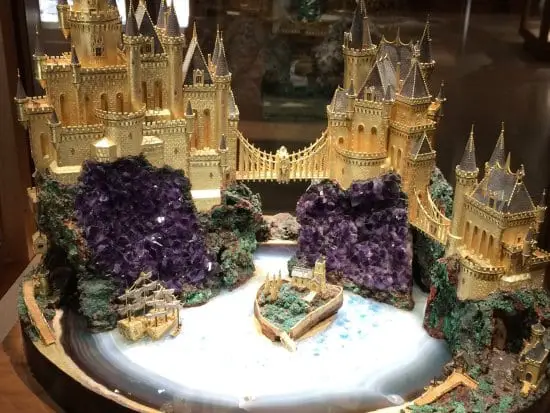
Lapidary is the art of lacerating and refining stones, which has its beginning in the prehistoric era, where early people started manufacturing tools and weapons made of precious stone. Eventually, these methods were also utilized for objects of private decoration. With that, the carving of stones was developed as a form of art in several cultures all over the world.
In the 1950s, Lapidary was one of the well-known hobbies in the United States. Those who pursued Lapidary found it pleasurable while lacerating and refining gemstones as well as straddling them in prefabricated jewelry set up or in the metalwork of their work. Mainly, hobbyists of lapidary loved making two kinds of stonework: Cabochons and Faceted stones.
![]() Cabochon
Cabochon

A cabochon is a gemstone that has been formed and refined in contradiction to faceted. The result is often a looped or ill-fated surface on top and a leveled or cambered bottom. This kind of cutting is the method that greatly shows the hues and designs of opaque stones.
Cabbing or cabochon is likely the most familiar configuration of Lapidary arts. This kind of cutting is perceivable to opal or turquoise jewelry, so if you have already seen them, you have also perceived cabochon.
Additionally, cabochon can be beneficial because it has an important resale price but it varies on the stone that you utilize. With that, this kind of stonework can be a fulfilling hobby, particularly when you cut the stone that you have found. Nonetheless, tools for cabbing are costly compared to other kinds of stonework. Though it is more difficult compared to other forms, it can make someone skillful with constant practice.
![]() Faceted Stone
Faceted Stone

A faceted stone is another gemstone, which has a sequence of leveled refined areas. Faceting improves the imputation of light that goes by to the stone that lets it glitters with color and brightness. This is as well mainly utilized on explicit or pellucid stone.
When it comes to all forms of Lapidary arts, faceting has the biggest possibility in profit. A sample of this stonework is perceivable to a classic engagement ring that has a diamond on it. Geometrically formed, leveled areas classically coat the surface of that diamond. Each of the leveled areas is known as a facet.
In doing this kind of stonework, it is advisable to use faceting machines. However, it is as well vital to prepare a necessary investment in this machine if you want to facet stone as a hobby or business. Compared to other Lapidary arts, the quality of your machine will influence both the outcomes and pleasure.
Faceting is open to everyone since it is an art that does not require some obscure artistic sense to take part in it. Some of those who take part in faceting are machinists, engineers, and those who have talent in math. With that, several of them are said to be semi-professionals.
Other fundamentals of Lapidary arts
Tumbling
Tumbling is the easiest style of Lapidary arts, as it only needs small equipment. In doing this kind of stonework, you simply place rough stone material into a tumbler and a circling barrel with a grinder. Continuously, excellent grinders are utilized until the stone achieves a refinement. This procedure is somehow similar to the stone in the stream or at the beach.

Nevertheless, tumbling provides better when it comes to the levels of refinement.
Furthermore, this kind of stonework is perfect for children and can be considered as a wonderful pastime for the family. It is as well a wonderful step to go over with the collected stones during vacations. Additionally, the outcomes are startling. Purchasing cheap fixtures and transform tumbled stones to jewelry can create amazing homemade presents.
Carving
Carving is the most demanding in the forms of Lapidary arts where there are only a few well-known specialists in this area. To become victorious in this kind of stonework, you need to have a typical artistic sense and an in-depth knowledge of lapidary postulates. Other than wood and metal, stones also show explicit boundaries to what someone can carve.

There are a lot of kinds of stone carving and one of the most recognizable is a cameo. Stone carvers normally get them seashells or agates. Nonetheless, the majority of the materials will just do. Cabochons are somehow carved as well. When this procedure is done at the top of a cab, carvers called it intaglio or relief carving. When the pattern is carved behind, it is known as reverse intaglio. Other carvings are not patterned to utilize in jewelry. Carvers do this procedure merely because of the image they have. Lapidary art is relaxing and thrilling since each gem is distinctive. It is as well a form of art that is never looking old, classless, and does not have national limitations. It is distinct in several ways and provided lots of things in social and religious ideologies, customs, ceremonies, credulity, and commerce. Moreover, the pundit in Lapidary is not mainly those who have college degrees, not inevitably expert cutters, and somehow those who have taught themselves.
